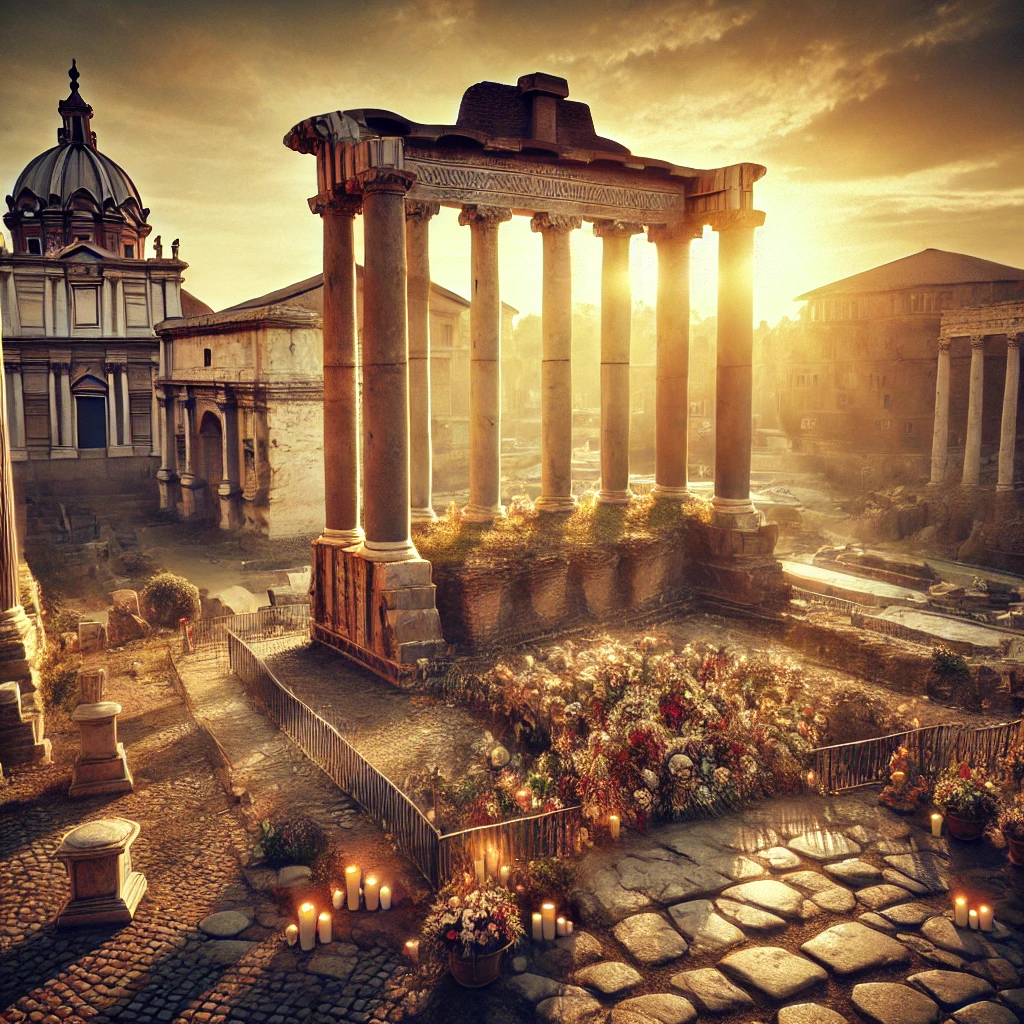Introduction: The Aftermath of an Assassination
Julius Caesar, the famed Roman dictator, was stabbed to death by senators on the Ides of March (March 15), 44 BCE. His death sparked chaos and a power struggle that led to the rise of Augustus and the Roman Empire. But where was Caesar laid to rest? Unlike many Roman nobles interred in grand mausoleums, Caesar’s burial reflects his tumultuous legacy—a blend of reverence and political symbolism.
The Cremation and Public Mourning
After his assassination, Caesar’s body was cremated in a massive public ceremony in the Roman Forum. According to historian Suetonius, grieving citizens threw offerings into the flames, including jewelry and clothing. His ashes were placed in a bronze tomb, but this site quickly became a place of political and cultural significance.
The Temple of Caesar: A Divine Memorial
In 42 BCE, Caesar’s heir Octavian (later Augustus) built the Temple of Caesar (Aedes Divi Iulii) at the cremation site. Key features:
- Location: Eastern edge of the Roman Forum, near the Regia and Temple of Vesta.
- Design: A grand temple dedicated to Caesar as Divus Iulius (the Divine Julius), the first Roman deified posthumously.
- Altar and Cult Statue: The temple housed a statue of Caesar and became a site for annual rituals honoring his legacy.
Today, visitors to the Forum can see the temple’s ruins, marked by a concrete altar and remnants of its podium.
Was Caesar Buried in a Traditional Tomb?
No. Unlike later emperors (e.g., Augustus or Hadrian), Caesar was not buried in a mausoleum. His deification and the temple’s construction transformed his cremation site into a sacred space. Ancient sources suggest his ashes were interred beneath the temple’s altar.
Controversies and Myths
- The Curia Julia: Some speculate Caesar’s ashes were moved to the Senate House he commissioned, but no evidence supports this.
- Medieval Legends: Tales claimed Caesar was buried in a golden coffin beneath the Tiber River—a myth debunked by historians.
Why the Temple of Caesar Matters
- Political Tool: Augustus used the temple to legitimize his rule as Caesar’s heir.
- Cultural Legacy: The site became a model for imperial cults, blending religion and state power.
- Archaeological Significance: Excavations reveal offerings left by Romans, including coins and inscriptions honoring Caesar.
Visiting Caesar’s Memorial Today
- Location: Roman Forum, Rome, Italy.
- What to See: The temple’s foundations, altar remnants, and informational plaques detailing its history.
- Nearby Landmarks: The Rostra (speaker’s platform) where Antony delivered his funeral speech, and the Lacus Curtius.
Conclusion: A Legacy Etched in Stone
Julius Caesar’s “burial” in the Temple of Caesar reflects his dual identity—mortal leader and immortal deity. Though his physical remains are long gone, the site remains a powerful symbol of his enduring influence on Rome’s transition from republic to empire.
History Peak | Walking Through Ancient History


